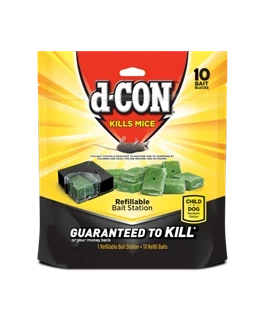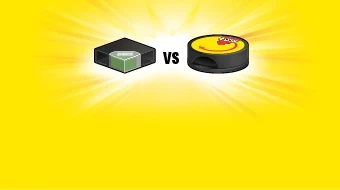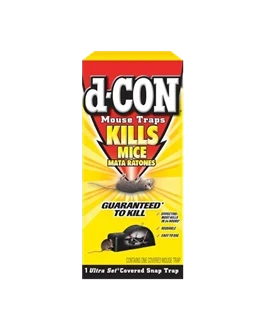Article
Mouse Traps How To
If you have signs of mice, you want them gone. Right now...or maybe sooner. Traps can get the job done -- and fast! They’re one of the most effective ways to rid your home of these pests, and they provide clear visual proof that they’ve worked. While all of them kill rodents quickly, there are several types available. Here’s what you need to know to pick the trap that’s right for you:
- Spin traps: d-CON’s No View No Touch traps offer a quick, convenient way to kill pests without ever seeing a dead mouse. These are circular plastic devices that don’t come pre-baited, so they’re non-toxic. You add a dab of peanut butter (the best bait), and then twist it to set it. Place it along walls and in corners; when a mouse enters in search of food, it triggers the trap. Not only is the mouse killed, the entryway shuts and an indicator on top tells you’ve successfully eliminated a pest. It can then be thrown away without seeing or touching a dead mouse.
- Snap traps: These classic, quick-kill mouse traps just need a tiny dab of peanut butter before being set. Choose the basic model, or d-Con’s Ultra Set SnapTrap, a reusable covered version. It’s a great option for those who’d rather not see the dead mouse.
In either case, placement is important: Since mice scurry close to walls and hide out in corners, the bait should face the wall so the critters are tempted to nibble as they explore. Once a mouse is caught, grab your household gloves when disposing of it, since rodents can carry disease.
- Glue Traps: These don’t involve any bait and give you proof-positive that you’ve eliminated the intruder. Just put the glue traps (also known as sticky traps) where you’ve seen signs of mice activity as well as along walls, near holes, next to cabinets and kitchen appliances, and in corners. These are typical rodent stomping grounds. d-Con’s glue traps fold to fit in small spaces, or try our new perforated Select-A-Size Glue Traps for additional customization. When you’ve caught a mouse, the trap can easily be thrown away.
Whichever option you pick, you’ll be on your way to quickly de-mousing your house.
Featuring

The learning center
Frequently Asked Questions
How many mice are in my house?
It can be difficult to tell exactly how many mice are in your house, which could range from a couple to a full-blown infestation. In short – the more signs you see, the more mice there are likely to be. If you actually see a mouse in the flesh, this is usually a sign that there are more nesting in your home.
Does one mouse mean an infestation?
One mouse doesn’t necessarily mean an infestation and it’s possible that you’ve only got a couple living under your roof – for now.
It’s important to remember that a few mice can turn into many due to their high rate of breeding, so if you notice any signs of mouse activity at all, make sure you get on top of the problem quickly with our no-mess Corner Fit Bait Stations.
How to tell if Mice are Gone
Once you’ve tackled your mouse problem you should know they’re gone simply by monitoring the signs that told you they were there in the first place. Over time you should notice that there are no more droppings, and all scratching sounds should have totally stopped. If you’re using bait stations, look out for signs that they’re working by checking for nibble marks on the actual bait, as well as by sprinkling flour around the station and watching out for footprints.
No one likes to think of having mice in their home but, unfortunately, it’s incredibly common. Read our hub of articles for more top tips and tricks about dealing with rodents in the home, including our article about the mouse’s bigger, scarier friend, ‘signs you have rats in your home’!




